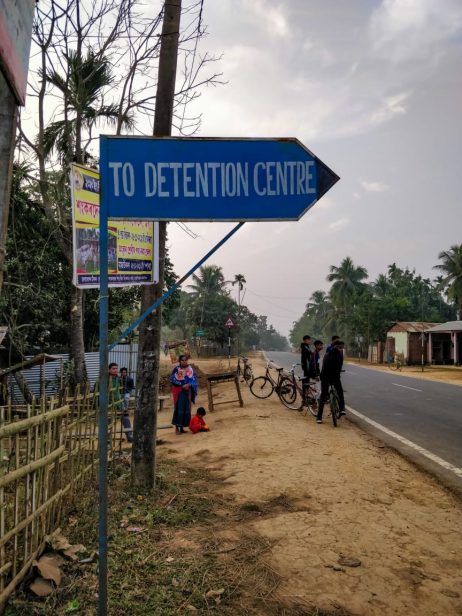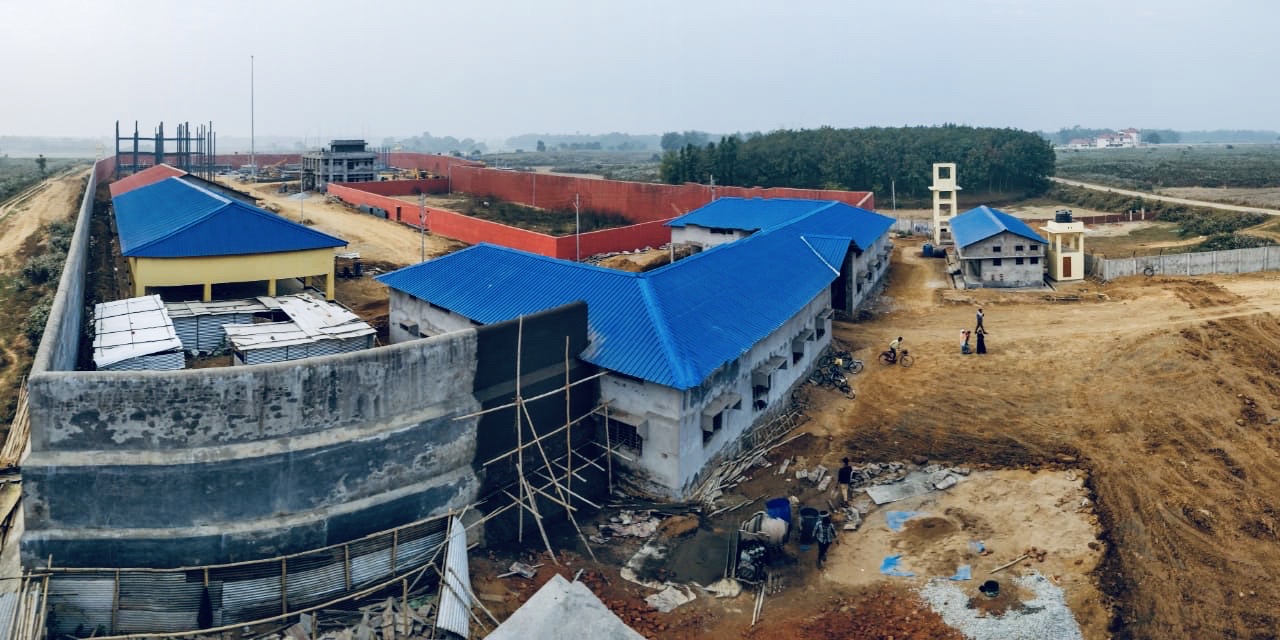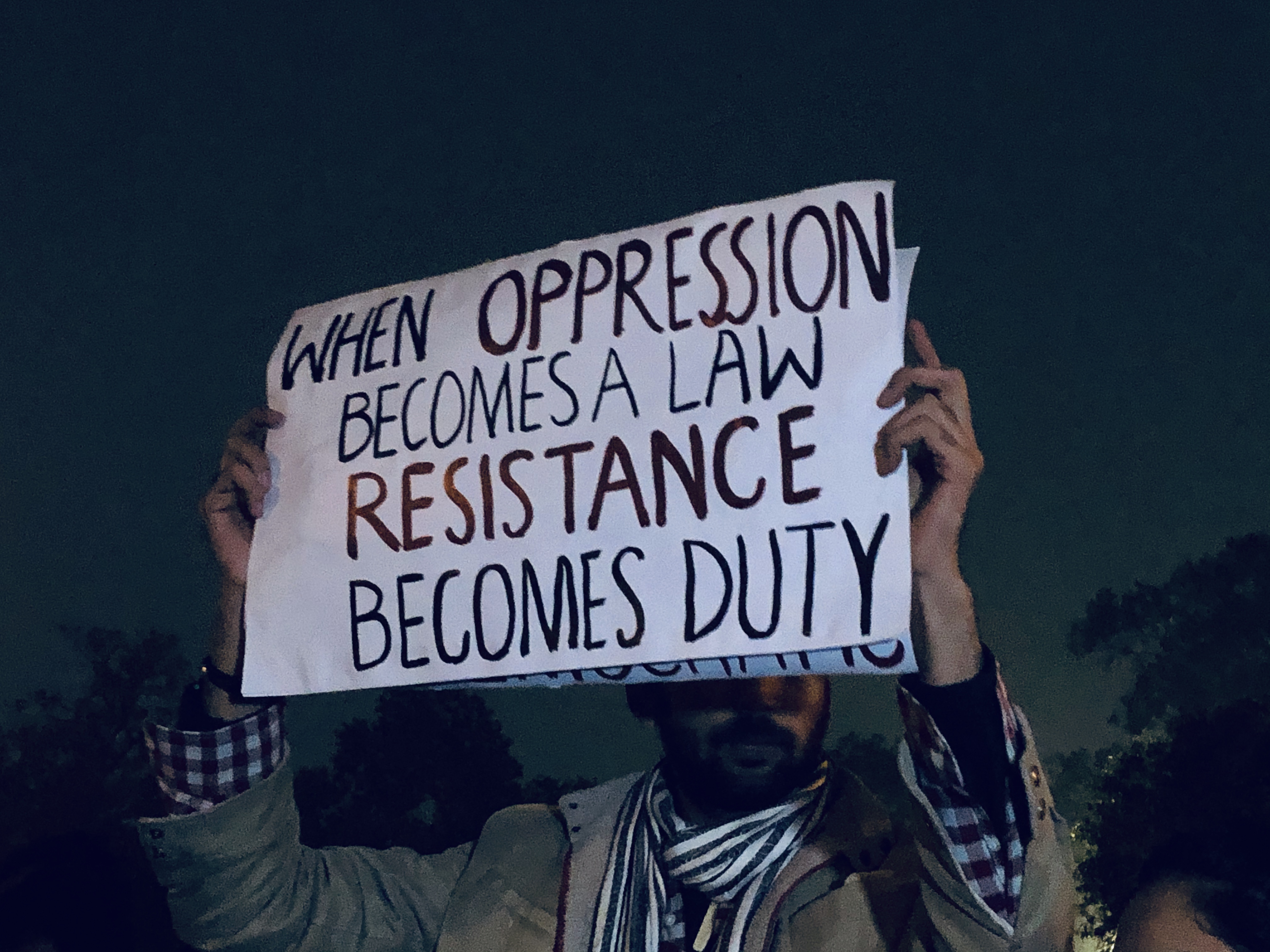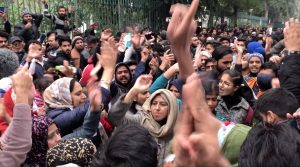It’s a formidable yet extraordinary time for India, a moment to be etched in history, as what is unfolding now will determine whether India’s founding principles of pluralism and secularism can stay intact or if the Narendra Modi government will be successful in driving a wedge between the Hindu and Muslim religious communities.
The country has been witnessing prolonged and unprecedented protests since the controversial Citizenship Amendment Act (CAA) was passed by both houses of Parliament on December 11, 2019. The Act provides a path to citizenship to communities who fled persecution in Pakistan, Bangladesh, and Afghanistan and entered India before December 31, 2014. Specifically, the act applies to people belonging to the Hindu, Sikh, Buddhist, Jain, Parsee, and Christian religions, but excludes Muslims.
So what’s wrong with that? It is perfectly legitimate, even laudable, for a government to expedite the process of granting citizenship to religiously persecuted migrants from neighboring countries. Why is a government’s magnanimous gesture and its show of compassion to unfortunate refugees questioned?
For the supporters of the Act, this is just another case of Modi-bashing. For the dissenters, the Act is exclusionary in nature as it leaves Muslims out and selectively omits refugees from other neighboring countries like Sri Lanka and Myanmar. The use of religion as a differentiator violates the secular nature of the Indian Constitution.
In 1947, at the time of independence when the subcontinent was cut asunder by a violent partition, India resisted defining nationhood on the basis of religion while Pakistan chose to be a Muslim nation. Protesters across the country are fighting the idea of a “Hindu Pakistan,” which would make India lose its soul, for it is in diversity not homogeneity that India flourishes.

Protesters holding placards at India Gate, New Delhi. Photo by Sumithra Prasanna.
The National Register of Citizens (NRC) and Its Link to the CAA
The CAA has to be seen in conjunction with the National Register of Citizens (NRC), an exercise that was recently completed in the Indian state of Assam. An appalling 1.9 million people have been rendered stateless on account of being excluded from the final list of the NRC published on August 31, 2019. To put this in perspective, it is roughly one half of the population of Los Angeles or nearly the whole of the Indian state of Nagaland. The Rohingya humanitarian crisis, where around 1.1 million Rohingya refugees are currently in a state of limbo in camps in Bangladesh, has attracted the world’s attention; the NRC is poised to make nearly twice that many people stateless.
In a five year-long project, 55,000 government officials conducted the mammoth task of examining the citizenship credentials of more than 31 million people in the northeastern state of Assam. The applicants had to produce papers to prove that they came to India by March 24, 1971, the day before neighboring Bangladesh declared independence from Pakistan. It was an exercise to rid the country of people that Amit Shah, India’s home minister, described as “infiltrators” and “termites” who were sucking the nation’s resources dry.
As I traveled across Assam to film for my upcoming documentary, I spoke to many families who have been thoroughly devastated by the NRC exercise that has excluded legitimate Indian citizens. Poor and illiterate people dedicated months away from their daily labor, their only means of livelihood, and focused instead on scrounging for legacy documents as proof of their citizenship to ensure that they got included in the NRC.
Out of 1.9 million people who were left out of the final list, experts who spoke to me said that nearly 1.2 million were Hindus. This came as a rude shock to the establishment, which expected a huge number of Muslims to be excluded. So the game plan, according to experts, is allegedly to ensure that citizenship for the excluded Hindus can be fast-tracked through the CAA while many Muslims can be cast off to detention centers. Granting citizenship to millions of Hindus also garners a major vote bank for the ruling Bharatiya Janata Party (BJP).

A brand new detention center, India’s largest, is being built in Matia, Goalpara district, Assam. Photo by Syed Husain Akbar.
The Human Costs
Twelve-year-old Muzammil Haque is the only one in a family of four who has been excluded from the final list. “I got frightened because the names of my father, mother, and sister are in the list, not mine. People have been arrested because the officials say they are ‘Bangladeshis.’ So, I was scared,” he says.
Many of his schoolmates have been excluded as well. At recess time, the children forget to have fun but instead get engrossed in discussing what the exclusion means for them and their future. “If they catch me”, Muzammil says sadly, “they would send me to Bangladesh. Or they might put me in jail here.” He fears the worst even as he wonders how he can be declared a “foreigner” when his parents are Indian citizens.
The cases of Muzammil Haque and thousands of others like him in Assam point to the ludicrousness of the whole NRC exercise. The absurdity has pushed many over the brink and forced them to commit suicide — at least six people in 13 days in July 2019 — for fear of being sent to detention camps.
The Indian government has said that those excluded can appeal in the various Foreigners’ Tribunals that have been set up. But that requires time and money – fees for lawyers or transportation charges to travel to places where the tribunals are located or time away from work incurring loss of wages. The total sum required to appeal runs to a minimum of $1,000-$1,500 per person and goes upwards depending upon circumstances such as how far away the tribunal is situated, how long the process takes, how much opportunistic lawyers fleece the poor, how many hearings one has attend, and so on.
The burden of proof of citizenship is on every citizen now and this is just the beginning of a nightmare that is to follow if, as Shah has said, the NRC becomes a nationwide exercise. And then, when the pan-Indian process identifies, even wrongly so, another couple of millions as noncitizens, what will the government do? If deportation is not an option yet as the government has stated, how many detention centers will it build?
The Truth About Detention Centers
Contrary to what Prime Minister Modi said in a speech recently — that there are no detention centers in India — there are actually six in Assam, all of which are inside jails. This means that the people who are deemed to be “doubtful” or “illegal” immigrants have to share space with those doing time for criminal offenses.
The one that I visited in Goalpara, situated around 130 kilometers to the west of capital Guwahati, is a jail within jail where the visiting gallery is open to view from the road. It is a heart-wrenching sight to see distraught families sobbing inconsolably at the sight of their dear ones standing on the other side of the prison grill, and worse still, at the thought of having to leave and not see them again for months on end.
Harsh Mander, former special monitor to the National Human Rights Commission (NHRC), who spoke to me said that every tenet of international law pertaining to human rights has been violated because the living conditions inside the centers are poor and the basic right of a day parole is not granted to the detainees. International law stipulates that those rendered stateless can be detained for a maximum of three months whereas here, they are kept for an endless period of time.
A brand-new detention center, India’s largest, is currently being built in Matia, Assam and is only a 30-minute-drive from Goalpara jail. It is slated to house around 3,000 people. So clearly, the prime minister of India is misleading the nation, even as he and Shah step on the gas to keep the nation on an emotional roller-coaster with a view to making Indian citizens forget about the dismal economy.

A brand new detention center, India’s largest, is being built in Matia, Goalpara district, Assam. Photo by Syed Husain Akbar.
Where Does India Go From Here?
Hindutva is a political ideology that was outlined by Vinayak Damodar Savarkar nearly a hundred years ago. Savarkar argued that a Muslim or a Christian, even if born in India, could not claim to possess the qualities of Hindutva, for according to him, the essentials of Hindutva were “a common nation (rashtra), a common race (jati) and a common civilization (sanskriti).” This is nothing but tyranny of the majority. Hindutva is a kind of a muscular nationalism based on cultural and racial identity and serves as an ideological justification for the construction of an idea of a “Hindutva nation” that The BJP and its parent body, Rashtriya Swayamsevak Sangh (RSS), have vowed to create.
The idea of a “Hindutva Rashtra” brutally assaults the very underpinnings of India’s constitution, which is grounded in secular principles. India sought never to be a majoritarian but rather to be an inclusive democracy where contrarian or dissenting voices were deemed as necessary for the nation to flourish. This is a country of multiple identities – we may have sharp differences but we have learnt to accept and celebrate those differences and co-exist. For the current political regime, it seems as if the Hindus in the country do not need to prove that they are “Indian” enough or patriotic enough whereas a Muslim needs to, for a Hindu is Indian by default while a Muslim is not.
What is also fundamentally destructive is the resistance of the BJP to protests that have only been growing each day. The government has held a vicious silence on attacks on students and communities who are only asserting their democratic right to protest in a peaceful manner. The BJP muzzles dissident voices by calling almost all of the nonconformists anti-national and by detaining prominent activists by slapping a curfew law that dates back to the pre-independence British colonial times. The government, for its part, has rolled out a campaign to put out a “positive narrative” about the CAA instead of engaging with the dissenters, who are not thugs but common people and ordinary citizens who have a right to raise questions and participate in a discursive process that involves exchange of views, reasons for and against a certain decision and rational communication.
Deliberative democracy is the normative ideal but unfortunately, the Indian democracy does not seem to be mature enough yet. What is emerging in India seems more like an “us vs them” battle where the government refuses to listen to the alternate point of view to weigh the merits of competing arguments and take into account information that is both convenient and inconvenient. The BJP and its supporters are listening only to views that are consistent with what they think. They are amplifying a narrative that they believe is right for the majority.
The big question is whether their divisive politics will forever change the social fabric of this country. The fear is that it may. The hope is that it shouldn’t.

Protesters holding placards at India Gate, New Delhi. Photo by Sumithra Prasanna.
Sumithra Prasanna is an award-winning documentary filmmaker. Her documentary film “Stateless in India” explores the human costs of India’s National Register of Citizens (NRC).

































